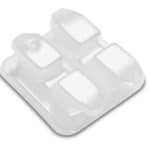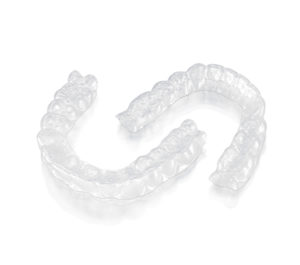When most of us think of braces, we usually think of teenagers…but did you know, bringing your child in for an orthodontic checkup no later than age 7 can be vitally important for a future healthy smile?
Optimal orthodontic treatment starts when the teeth and jaw are still developing. Exploring treatment options early allows Dr. Brian Leypoldt to monitor the development of the upper and lower jaws as your child grows, making sure they are developing in a way that will provide adequate room for permanent teeth and ensure a well-aligned bite.
If early intervention is deemed necessary for your child, it can begin as early as between the ages of 7-10 when some baby teeth are still remaining. Beginning treatment at this time can create additional space for crowded teeth, provide room for teeth that may be coming in crooked, prevent uneven growth of the jaw, and even help eliminate thumb or finger sucking habits.
Once all the baby teeth have fallen out and permanent teeth have come in, the goal of orthodontic treatment at this stage is to solidify the position of the permanent teeth and adjust the bite so that teeth are in the optimal position for good oral health and a beautiful smile.
There are a variety of options when it comes to choosing the type of orthodontic treatment for your child. For other services we offer, click here.
Traditional Braces
Traditional braces typically refer to metal braces which are made of stainless steel or titanium. The first braces created were metal and they are still the most commonly-used form of braces today. Thankfully, however, current braces are flatter, smaller, and significantly more comfortable than they used to be.
Traditional braces consist of brackets that are cemented to the surface of the teeth. A wire connects the brackets and are adjusted regularly to gradually move the teeth into proper alignment. Elastic ties, which come in a variety of colors, hold the wires and the brackets together and are replaced with fresh ones every time the wire is adjusted.
Ceramic (Clear) Braces
A more attractive and appealing alternative to the metal braces includes the ceramic or clear braces. If your child is concerned about having a “metal mouth” and would prefer a less noticeable option, ceramic braces are an excellent choice. They function just the same as metal braces but the brackets are clear or teeth-colored and are therefore, less noticeable.


Clear Aligners
A newer, popular option for are younger patients, are invisible aligners which are clear, custom-made, and removable. Over the course of treatment, several sets of these custom clear aligners gradually shift the teeth into a more appropriate position.
Retainers
Retainers are custom-made plastic molds or wires that keep your child’s teeth from shifting after all the work from the braces has been completed and the braces have been removed. After you’ve invested plenty of time and money into straightening your child’s smile, you’ll want to make sure it stays that way!
Your child will continue to grow even after the braces are removed but regular use of a retainer can help ensure they keep that beautiful, straight smile you all worked so hard for!

